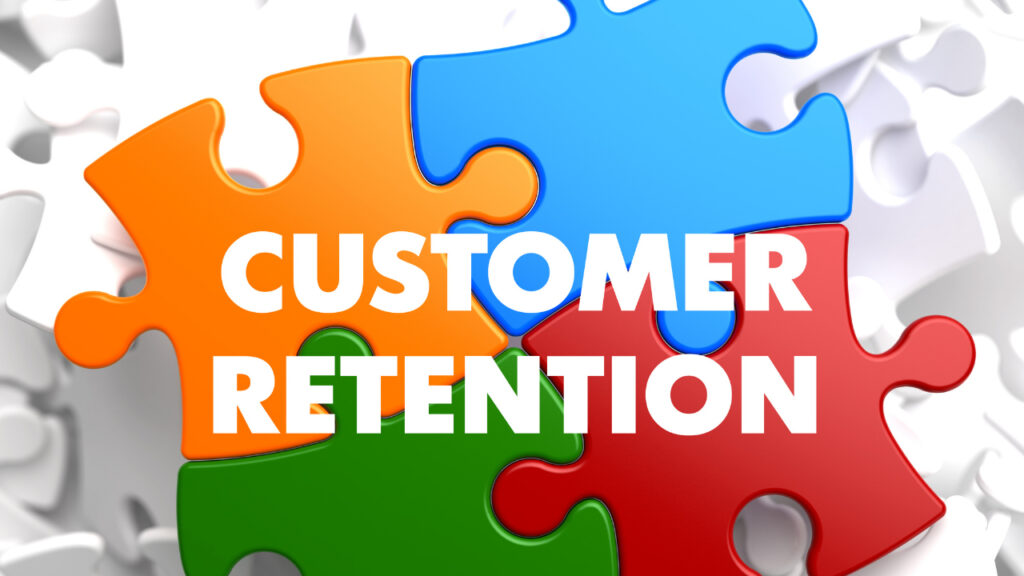The Power of having a Customer Retention Strategy in a Small Business
Introduction
Success is often defined by the ability to not only attract new customers but also to retain the ones you’ve already won over. Having a customer retention strategy in place holds the promise of sustained growth and prosperity, is the cornerstone of enduring success in today’s competitive marketplace.
Setting the Stage for Success
Picture this: You’ve put your heart and soul into your small business venture, meticulously crafting products or services that you’re proud of, and you’ve worked tirelessly to acquire a steady stream of customers. Each customer who walks through your door or visits your website represents more than just a transaction; they are the lifeblood of your enterprise. But here’s the catch: acquiring customers is just the beginning of the journey.
In this article, we’ll delve deep into the art and science of having customer retention strategies in place. We’ll explore why it’s not just a buzzword but a fundamental strategy that can catapult your small business to new heights. Together, we’ll uncover the strategies, insights, and real-world examples that illustrate the transformative power of retaining customers. So, fasten your seatbelts as we embark on a journey to unlock “The Power of Customer Retention in Small Business Success.”
Understanding Customer Retention
Defining Customer Retention
Before we dive into the nuts and bolts of customer retention, let’s establish what it means. Customer retention is the art of keeping your existing customers engaged and loyal to your brand over an extended period. It’s about nurturing relationships and ensuring that once a customer chooses your business, they keep coming back for more.
Why Customer Retention Matters
Why is this concept of customer retention so critical for small business success? The answer lies in the numbers. Studies consistently show that it’s far more cost-effective to retain an existing customer than to acquire a new one. In fact, it can be five times more expensive to attract a new customer than to keep an existing one satisfied.
Moreover, loyal customers are more likely to make repeat purchases, spend more on each transaction, and even become advocates for your brand. They can help you acquire new customers through word-of-mouth referrals, saving you marketing expenses. In essence, customer retention is not just about maintaining your revenue stream; it’s about growing it steadily and sustainably.
The Benefits of Customer Retention
Increased Revenue and Profitability
One of the most immediate and tangible advantages of focusing on customer retention is the boost in revenue and profitability. When your existing customers keep returning to your business, they’re likely to spend more over time. They’re familiar with your products or services, trust your brand, and are more open to exploring additional offerings.
Think of it as compounding interest for your business. As you build a loyal customer base, the revenue generated from repeat purchases steadily increases, creating a reliable and predictable income stream. This stability can be a game-changer, especially for small businesses with limited resources.
Cost Savings
Customer acquisition can be expensive. You might invest in advertising, marketing campaigns, and promotions to attract new customers. On the other hand, retaining customers often requires less expenditure. You’ve already established a relationship with them, and they know your value proposition. By nurturing these existing relationships, you can reduce your marketing costs and allocate resources more efficiently.
Building a Loyal Customer Base
Loyal customers are your most valuable asset. They are not just buyers; they are advocates for your brand. They not only return for your products or services but also sing your praises to friends, family, and colleagues. This word-of-mouth marketing can bring in new customers without any additional effort or expense on your part.
Furthermore, loyal customers are more forgiving of occasional hiccups and are more likely to give constructive feedback, helping you improve your offerings and customer service.
 Customer Retention Strategies
Customer Retention Strategies
Personalised Customer Experiences
One of the most potent tools in your arsenal for retaining customers is personalisation. Customers appreciate feeling valued and understood by your business. Utilise customer data to tailor your interactions, offers, and recommendations to their specific needs and preferences. Personalised emails, product recommendations, and exclusive offers can go a long way in making customers feel appreciated.
Exceptional Customer Service
Excellent customer service is a non-negotiable aspect of customer retention. Ensure that your team is well-trained and empowered to provide top-notch service. Promptly address customer inquiries, resolve issues with empathy, and make the customer feel heard and respected. Remember, a positive customer service experience can turn a potentially disgruntled customer into a loyal advocate.
Loyalty Programs and Rewards
Implementing a loyalty program can incentivise repeat business. Offer rewards, discounts, or exclusive access to loyal customers. These programs not only encourage customers to keep coming back but also make them feel like valued members of a community.
Consistent Communication
Maintaining open lines of communication with your customers is vital. Send regular updates, newsletters, and relevant content to keep them engaged. Listen to their feedback and use it to improve your products and services continually. Effective communication helps build trust and reinforces your commitment to meeting their needs.
By incorporating these strategies into your business practices, you’ll be well on your way to achieving effective customer retention. But how do these strategies work in real-life scenarios? Let’s explore some concrete examples in the next section with real-world case studies.
Real-World Examples
Case Studies of Small Businesses
To truly understand the impact of customer retention strategies, let’s explore some real-world case studies of small businesses that have excelled in this area.
- The Local Bakery: A small bakery in a tight-knit community implemented a loyalty card program where customers received a stamp for every purchase. After accumulating a certain number of stamps, customers received a free pastry. This simple yet effective strategy not only encouraged repeat visits but also fostered a sense of belonging within the community.
- The Online Retailer: An e-commerce store specialising in handmade jewellery made excellent use of personalised emails. They sent tailored product recommendations based on each customer’s purchase history, resulting in a significant increase in repeat purchases and a boost in revenue.
- The Family-Owned Restaurant: A family-owned restaurant created a unique experience by remembering their regular customers’ names, favourite dishes, and special occasions. This personal touch made customers feel like part of the restaurant family, leading to a dedicated following and word-of-mouth referrals.
These case studies illustrate how businesses of all sizes can implement customer retention strategies effectively. Whether through loyalty programs, personalisation, or exceptional service, these businesses have harnessed the power of retaining customers to fuel their growth.
Now that you’ve seen the success stories, it’s essential to measure and track your efforts to ensure they’re delivering the desired results. In the next section, we’ll explore key metrics and tools for tracking customer retention.
Measuring and Tracking Retention
Key Metrics to Monitor
To gauge the effectiveness of your customer retention efforts, you must track key performance indicators (KPIs) relevant to your business. Some essential metrics include:
- Customer Churn Rate: This metric measures the percentage of customers who stop doing business with you over a specific period. A higher churn rate indicates a need for improvement in your retention strategies.
- Customer Lifetime Value (CLV): CLV calculates the total revenue a customer is expected to generate throughout their relationship with your business. Increasing CLV is a sign of successful retention efforts.
- Net Promoter Score (NPS): NPS measures customer satisfaction and their likelihood to recommend your business to others. High NPS scores correlate with strong customer retention.
- Repeat Purchase Rate: This metric tracks the percentage of customers who make multiple purchases. A high repeat purchase rate indicates effective retention strategies.
- Customer Feedback and Surveys: Collect qualitative data through customer feedback and surveys to gain insights into their experience and identify areas for improvement.
Tools and Technology for Tracking
Various software and tools are available to help you monitor these metrics effectively. Customer relationship management (CRM) systems, email marketing platforms, and analytics tools can provide valuable data and insights to refine your retention strategies.
By regularly measuring and tracking these metrics, you can make data-driven decisions to enhance your customer retention efforts and achieve sustainable growth.
In the next section, we’ll address the challenges you may encounter in your customer retention journey and provide solutions to overcome them.
Challenges and Solutions
Common Hurdles in Customer Retention
While customer retention is a powerful strategy, it does come with its fair share of challenges:
- Competition: In today’s marketplace, customers have countless options. Staying ahead of the competition and retaining customers can be challenging.
- Changing Customer Preferences: Customer preferences can evolve over time. Adapting to these changes while still providing value is crucial.
- Resource Constraints: Small businesses often have limited resources for customer retention efforts, making it essential to allocate resources wisely.
- Customer Expectations: As customer expectations rise, meeting and exceeding them becomes increasingly vital for retention.
Overcoming Challenges
To overcome these challenges, consider these solutions:
- Differentiation: Stand out from the competition by offering unique products, exceptional service, or innovative solutions. Create a compelling value proposition that sets your business apart.
- Continuous Learning: Stay attuned to evolving customer preferences through market research, surveys, and feedback. Adapt your offerings and strategies accordingly.
- Resource Allocation: Allocate resources strategically. Focus on high-impact retention strategies that align with your budget and capabilities.
- Exceptional Service: Consistently deliver exceptional customer service. Address issues promptly, exceed expectations, and build strong relationships.
Incorporating these solutions into your customer retention strategy can help you navigate the challenges and maintain a strong customer base.
Creating a Customer-Centric Culture
Employee Training and Engagement
Building a customer-centric culture starts from within. It’s essential to train your employees to understand the importance of customer retention and provide them with the tools and knowledge to deliver exceptional service. Encourage empathy, active listening, and problem-solving skills among your staff. When employees are genuinely invested in customer satisfaction, it shines through in every customer interaction.
Aligning Business Goals with Customer Needs
To truly embody a customer-centric culture, your business goals should align with the needs and preferences of your customers. Consider conducting regular meetings or surveys to gather feedback from both employees and customers. Use this feedback to refine your products, services, and overall customer experience.
Additionally, ensure that your marketing and sales strategies are designed to attract and retain your target customer base. When your entire business is structured around meeting customer needs and exceeding expectations, customer retention becomes a natural outcome.
By fostering a culture that prioritises the customer, you’ll create a positive feedback loop that reinforces customer loyalty and contributes to the long-term success of your small business.
Conclusion
“The Power of Customer Retention in Small Business Success” is not just a catchy title—it’s a testament to the transformational impact that retaining customers can have on your enterprise. From boosting revenue and profitability to fostering loyalty and advocacy, customer retention strategies are the lifeblood of small business growth.
As you embark on your journey to harness this power, remember the strategies, metrics, and solutions discussed in this article. Whether you’re a local bakery, an online retailer, or a family-owned restaurant, the principles of customer retention remain universal.
So, take action, implement these strategies, measure your progress, and cultivate a culture that places your customers at the heart of everything you do. In doing so, you’ll not only secure your small business’s future but also create a loyal community of customers who will support you for years to come.
If you’d like to pick up the conversation book a complimentary strategy session
Why not check out our YouTube channel for more insights on business strategy







